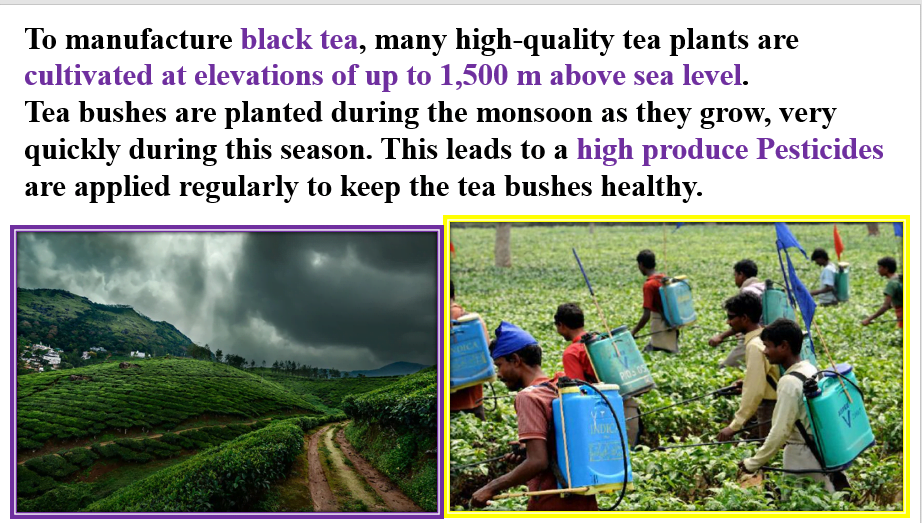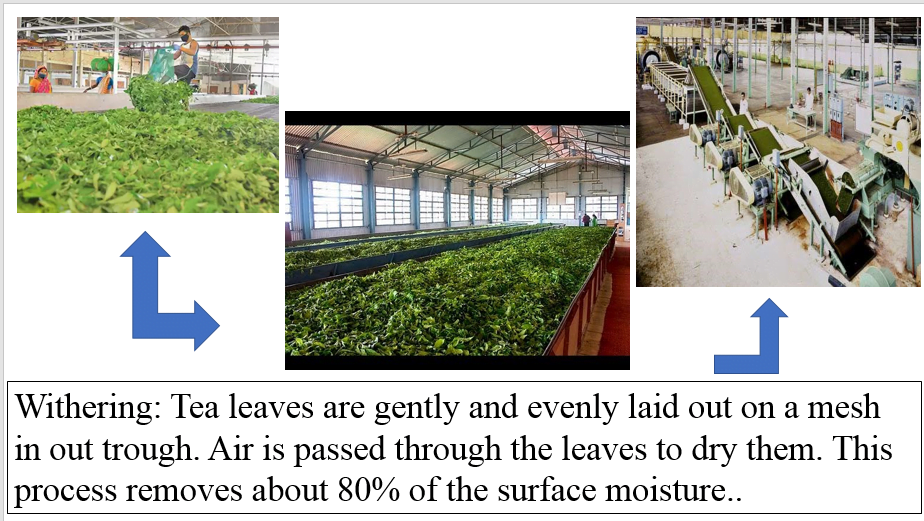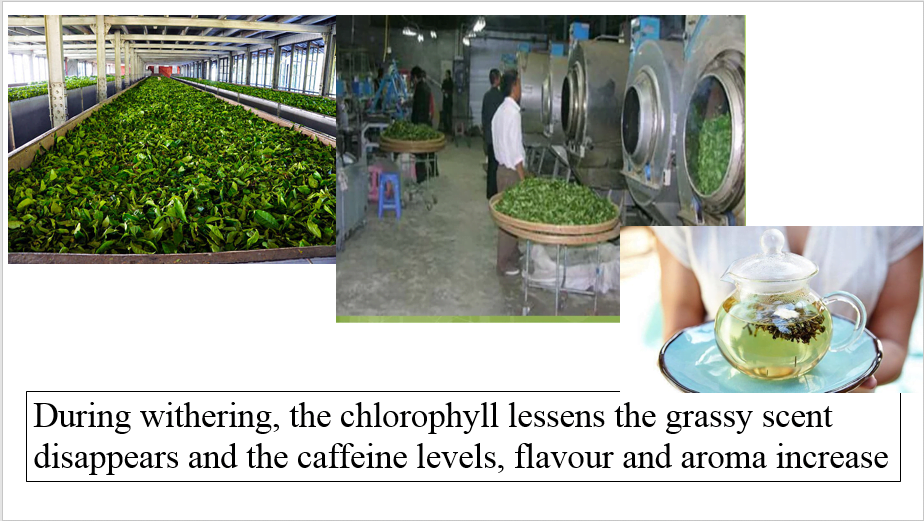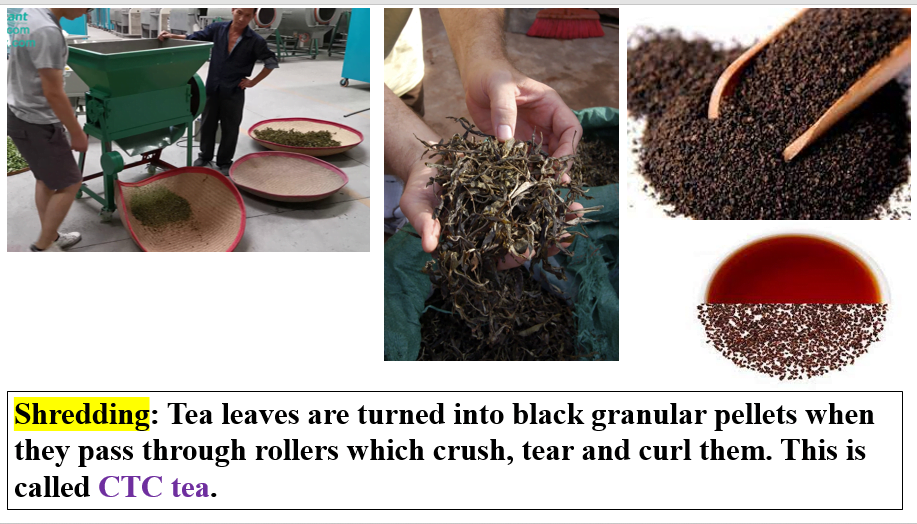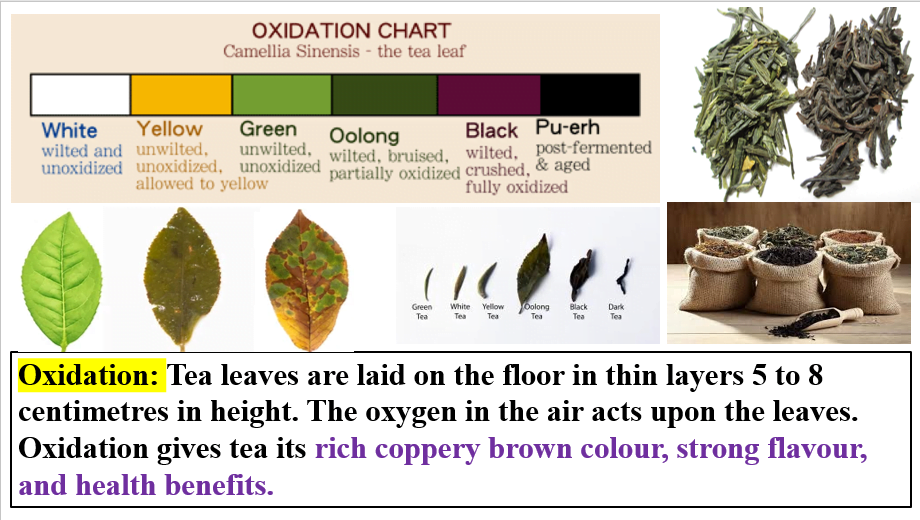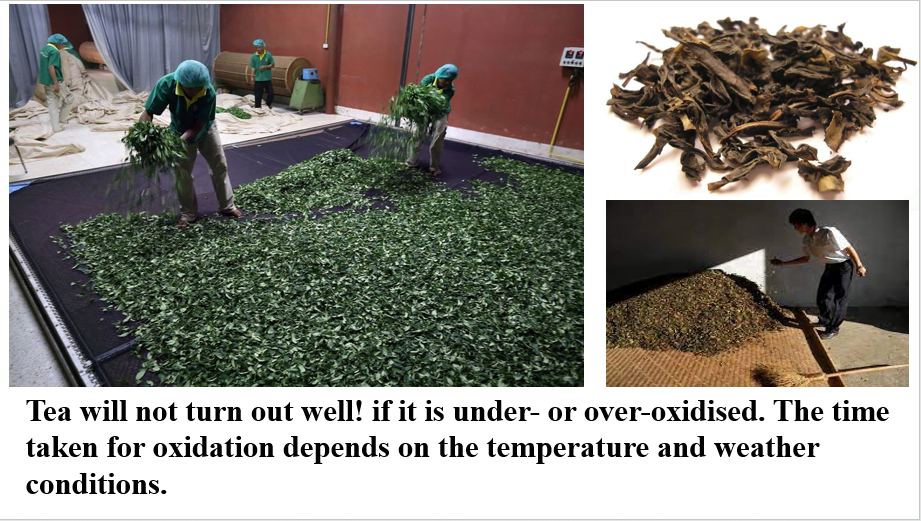Have you ever wondered about the journey tea leaves take from the tea plantation to your cup? It takes a lot of care and detail to grow and process tea. Tea is got from a particular plant -the Camellia sinensis. It includes only four varieties: green, black, white and oolong. To manufacture black tea, many high-quality tea plants 3, cultivated at elevations of up to 1,500 m above sea level. Tea bushes are planted during the monsoon as they grow very quickly during this season. This leads to a high produce Pesticides are applied regularly to keep the tea bushes healthy. Tea leaves are plucked almost throughout the year. Hundreds of women, with expertise and care, pluck only the top leaves and the unopened buds. Each woman plucks about twenty-one kilograms of tea leaves in a day. The plucked leaves are transported to a tea processing factory.
Do you want to know how the tea leaves are processed?
Withering: Tea leaves are gently and evenly laid out on a mesh in a trough. Air is passed through the leaves to dry them. This process removes about 80% of the surface moisture. During withering, the chlorophyll lessens. The grassy scent disappears and the caffeine levels, flavour and aroma increase.
Shredding: Tea leaves are turned into black granular pellets when they Pass through rollers which crush, tear and curl them. This is called CTC tea.
Oxidation: Tea leaves are laid on the floor in thin layers 5 to 8 centimetres in height. The oxygen in the air acts upon the leaves Oxidation gives tea its rich coppery brown colour. strong flavour,
and health benefits. Tea will not turn out well! if it is under- or over-oxidised. The time taken for oxidation depends on the temperature and weather conditions. In the monsoon, tea takes longer to oxidise, while in summer, it takes a shorter time.
Drying or Firing: When the tea leaves go into the dryer, the content of moisture in the tea is reduced to only 2%. The dryer can dry six hundred kilos of tea leaves in an hour.
Sifting or Sorting: The sorting is done on a roller. Pieces of tough stalk and fibre are removed. The
dust and leaves are separated into grades of various shapes and sizes, depending on how they will be sold. The finest ones will go into tea bags and the larger ones will be used in loose-leaf tea packets. This results in a slightly different flavour in the final cup of tea.
Winnowing: Tea leaves are winnowed, which blows away impurities like dust. The denser and lighter particles of tea are separated. The denser particles will be packaged. The lighter particles will be added to non-premium tea in the next processing cycle.
Packaging: Tea of a single grade but produced on different days is mixed together. It is then Packaged and ready to be shipped to buyers. Tea has many health benefits. Remember, as important as it is to eat healthy, it is just as important to drink healthy too.
According to legend, Shennong, a legendary Chinese emperor, liked to drink boiled water because it would be clean. One day in 2737 BCE, while travelling to a distant place, he and his army stopped to rest. As a servant began boiling water, a dead leaf from the wild tea bush fell into the water. It turned a brownish colour. The servant did not notice the brownish water and gave it to the emperor anyway. The emperor drank it and found it very refreshing, and cha (tea) was discovered.




